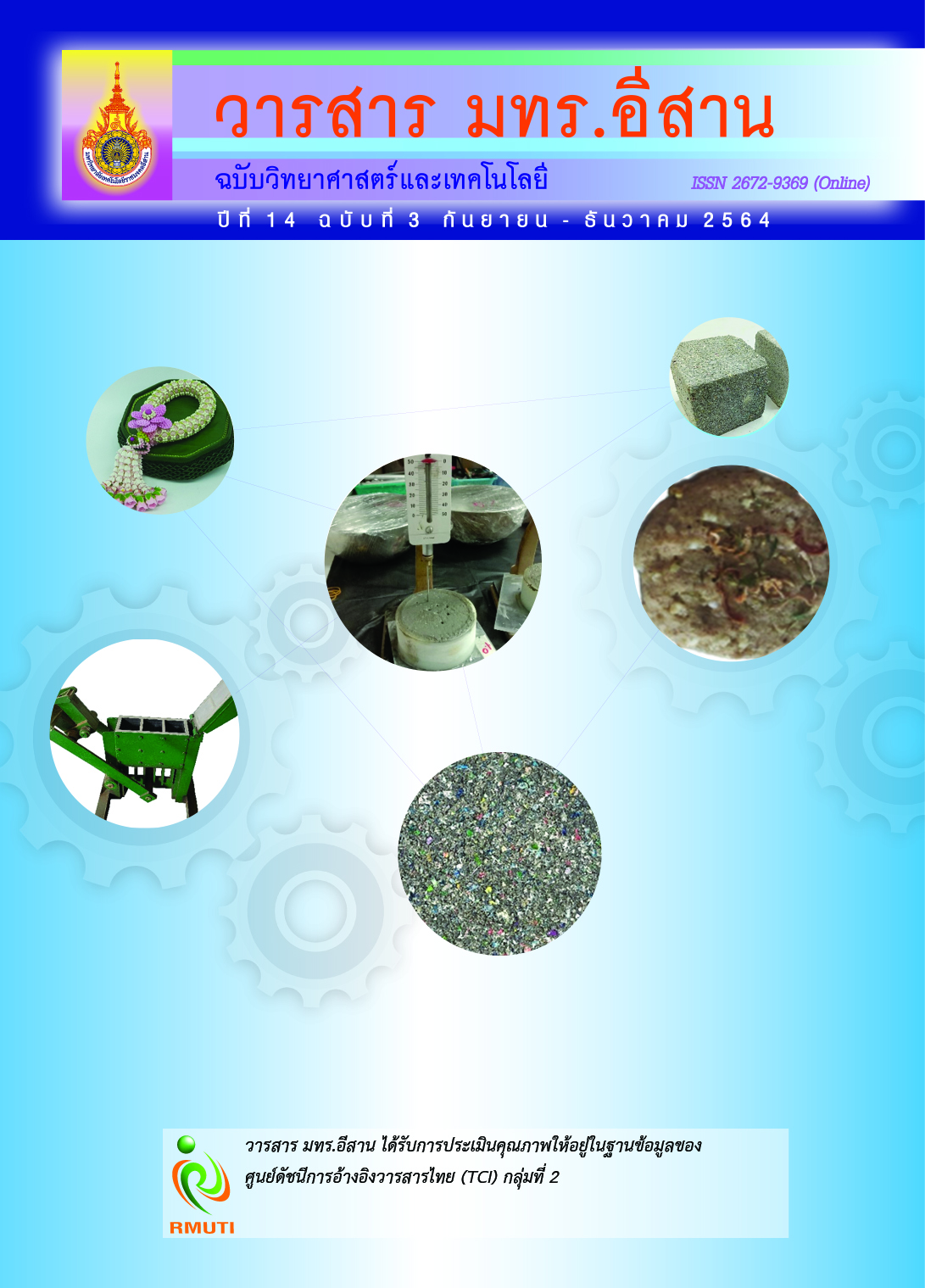Health Risk Assessment of Sulfuric Acid Exposure; A Case Study of Cup Lump Production of Rubber Farmers in Mueang District Rayong Province
Main Article Content
Abstract
The objectives of this study were to determination of rubber planters to sulfuric acid exposure, health risk assessment and study the knowledge, understanding and behavior of self-protection from exposure to sulfuric acid of rubber planters. The purposive selected sample was 120 rubber plantation farmers operating in Mueang district Rayong province which use the personal air sampling device connected to a silica gel adsorption tube following to the NIOSH method 7903. Health risks assessment associated with inhalation of sulfuric acid based on a Hazard Quotient (HQ) ratio according to the US EPA method. The results showed that the amount of concentration of sulfuric acid (TLV-TWA) that rubber planters receive in the process of mixing and dropping acid between 0.003 - 0.278 mg/m3 and 0.002 - 0.007 mg/m3 which does not exceed the NIOSH standards (1 mg/m3). The health risk assessment of rubber planters in the acidification process has an average risk ratio of 1.56, which is greater than 1; meaning that may cause health impacts or health risks of rubber planters. The knowledge and the understanding of safe operation was mostly low at 64.17 %. The self-protection behavior from sulfuric acid exposure of the rubber farmers was at a moderate level at 74.17 %. The results from this study could be used to planning and as a guideline for management, control and reduce the risk factors that occurring to be more efficient.
Article Details
References
Kasikorn Research Center. (2015). Through the Thai Rubber Crisis of 2015, Alternatives & Salvation of Pharmaceutical Farmers Amid Price Pressure. Kasikorn Research Center, 21(2609), 1-5. (in Thai)
Agricultural Research Development Agency. (2015). The Importance of Para Rubber to Economy and Society. Access (17 December 2020). Available (http://www.arda.or.th/kasetinfo/south/para/history/01-10.php)
Department of International Trade Promotion Ministry of Commerce. (2020). Export of Rubber Products for the Year 2020. Access (4 December 2020). Available (https://ditp.go.th/ditp_web61/article_sub_view.php?filename=contents_attach/605380)
Joomjee, R., Burilert, O., Songserm, N., and Theppitak, C. (2016). Prevalence of Musculoskeletal Symptoms Among Rubber Farmers. At the National Conference on Ergonomics. (Pages 1-10). Nakhon Ratchasima: School of Medicine, Suranaree University of Technology. (in Thai)
Division of Occupational and Environmental Diseases, Department of Disease Control, Ministry of Public Health. (2019). Disease Caused Sulphur Dioxide or Sulphuric Acid. Access (9 November 2020). Available (http://envocc.ddc.moph.go.th/contents/view/69)
Occupational and Chemical Diseases Database Center of Excellence for Hazardous Substances and Waste Management Chulalongkorn University (2020). Work-Related and Chemical Diseases. Access (10 March 2020). Available (http://www.chemtrack.org/Chemetail.asp?ID=00110&NAME=Amido sulfuric acid)
Safety Data Sheet; SDS. (2020). Sulfuric Acid. Access (9 January 2020). Available (https://www.merckmillipore.com/TH/en/product/Sulfuric-acid-980-0,MDA_CHEM-112080?ReferrerURL=https%3A%2F%2Fwww.google.com%2F#anchor_Safety%20Information)
Rubber Authority of Thailand. (2015). Production of Good Quality Rubber Cup Lumps. Access (10 December 2020). Available (https://www.raot.co.th/ewt_dl_link.php?nid=4874)
Office of Agricultural Economics. (2020). Agricultural Economic Data; Rubber. Access (3 November 2020). Available (www.oae.go.th/assets/portals/1/fileups/prcaidata/files/para%20rubber61.pdf)
Yamane, T. (1973). Statistics: An Introductory Analysis. 3rd Ed. New York. Harper and Row Publications. pp. 727-728
NIOSH Manual of Analytical Methods 7903. (1994). Fourth Edition. ACIDS, INORGANIC. Access (7 December 2020). Available (https://www.cdc.gov/niosh/docs/2003-154/pdfs/7903.pdf)
U.S. EPA. (1992). Exposure Assessment Tools by Routes - Inhalation. Access (7 December 2020). Available (https://www.epa.gov/expobox/exposure-assessment-tools-routes-inhalation)
U.S. EPA. (2009). Risk Assessment Guidance for Superfund. Access (4 October 2020). Available (https://www.epa.gov/sites/production/files/2015-09/documents/partf_200901_final.pdf)
Occupational Safety and Health Administration; OSHA. (1988). U.S. Department of Labor. SULFURIC ACID IN WORKPLACE ATMOSPHERES. Access (13 December 2020). Available (https://www.osha.gov/sites/default/files/methods/id-113.pdf)
American Conference of Governmental Industrial Hygienists (ACGIH). (2015). TLVs and BEIs Based on the Documentation of the Threshold Limit Values for Chemical Substances and Physical Agents & Biological Exposure. Access (4 October 2020). Available (https://www.cdc.gov/niosh/docs/2003-154/pdfs/7903.pdf)
Thammarakcharoen, S. and Jaree, A. (2014). Chemical Exposing Risk Management in Brass Coating Process. Kasetsart Engineering Journal, Facuty of Engineering, Kasetsart University. Vol. 27, No. 88, pp. 69-79
The Database of Occupational and Chemical Diseases. (2020). Center of Excellence for Hazardous Substances and Waste Management Chulalongkorn University. Access (9 January 2020). Available (https://www.chula.ac.th/cu-services/quality-assurance-services/center-of-excellence-on-hazardous-substance-management)
Merck. (2020). SDS; Sulfuric Acid. Access (14 January 2020). Available (https://www.merckmillipore.com/TH/en/product/msds/MDA_CHEM-100716)
The International Agency for Research on Cancer; IARC. (2012). Monographs on the Identification of Carcinogenic Hazards to Humans. Agents Classifi ed by the IARC Monographs, Vol. 1-129, Group 1 Carcinogenic to Humans. Access (7 December 2020). Available (https://monographs.iarc.who.int/list-of-classifications)
Becker, M. H. (1975). The Health Belief Model and Sick Role Behavior. In Becker, M. H., editor. The Health Belief Model and Personal Health Behavior. Thorofare, N. J.: Charles, B. Slack; 1974. pp. 82-92


